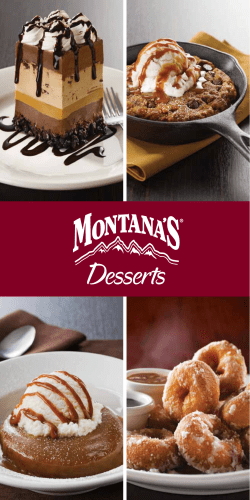
So you want to start an Ice Cream & Gelato...
So you want to start an Ice Cream & Gelato shop business In the UK Ice cream is a multi million pound growth industry, generally recession proof and genuinely customer focused. When people buy Ice Cream it’s always a treat and often a celebration. As a Gelato-Artisan you’ll provide your customers with a product that brings them happiness. But you will need to put in long hours too, it’s common for owners to work until 10pm at night during busy season, but in return you will unleash your inner creativity, growing your own lifestyle business, where your friends and family can surround you, and make a comfortable income in the process. If there was an ‘Ice Cream Bible’ it would probably contain the proverb; “Give someone an Ice Cream and you’ll make them happy all day” “Give them an Ice Cream Shop and you’ll make them happy for Life! “ “So you have the desire & energy to create your own Ice Cream-Gelato business but first you must consider some important aspects, not least your unique selling point” Some important questions to ask yourself before you start: Do I want to focus on organic products, all natural Ice Cream, Italian gelato, yogurt or hi-fat premium ice creams? Will I sell from a high street location, Seaside, farm-shop, beauty spot or simply wholesale your produce? What extra equipment will be needed to help me sell the Ice Cream such as display freezers, trike or old fashioned barrow, van or delivery truck? What prices will I need to charge in the ‘market place’ to make a profit and still be competitive, and how much will I need to sell to cover my fixed costs? Do I know what my mix will cost to make and what percentage of profit will I need to achieve? The Basic Process There are 3 stages of production:Firstly, the raw ingredients mainly milk, added milk powder, sugars and fats such as cream, butter or vegetable-fats, must all be cooked & blended through heating to fully emulsify the Mix. Heating to a temperature of 65-85C for a specific time to achieved ‘Pasteurisation’ which then kills any bacteria present in the pre-heated ingredients. Most Countries have very similar ‘Food Regulations’ and guide lines relating to ‘milk based’ products. During this heating & cooling phase, flavourings can be added to the Pasteuriser, such as Cocoa to make Chocolate Ice Cream or nut pastes to make Hazelnut and other flavours. Sometimes Vanilla Pods are also added, although in most cases the Vanilla is only added to the mix once cooled. This is almost always the case with Industrial Method. Secondly, the heated mix must be cooled rapidly, regulation normally specify this must be done within 1 &1/2 hours ,to a required temperature of 7C or lower ,and most equipment will usually continue this cooling down to 4C. Once cooled the mix is allowed to Age and sometime rest before flavours such as Strawberry, Mint, Vanilla and other fruit paste are added. Usually smaller quantities of the mix are separated to make many different flavours from this one batch. With the Industrial Method described below, during the second stage the mix is pumped from the Pasteuriser through a Homogeniser (a high pressure pump). This force the fat globules present to be broken down and reduced into smaller regular sized globules, to form a homogenous mix structure. The mix is then pumped through a ‘Plate-Cooler’ and into the ‘Ageing Vat’ to be further cooled for storage. The advantage gained by homogenisation is a smoother texture to your product giving the benefits in long-term storage. Finally the chilled mix is frozen to -6C to -9C, very quickly within 5-10 minutes in a ‘Freezer’ either Continuous or Batch Freezer by way of a churning/whipping process. During this freezing cycle the complete mixture is poured into the freezing chamber of the ‘Freezer’ to be frozen. Inside this chamber the Mix, now containing sugars + water + fats + proteins is partially frozen incorporating air bubbles, resulting in a finished Ice Cream similar in consistency to a Soft-Serve Ice Cream. The correct quantity of each of these components listed is very important, to the production of a smooth, dry, creamy, textured product. Too much of any one component in the formula will cause negative effects to the product, these can be ‘sandiness’, ‘iciness’ or fast melt down, and will not help you establish a quality standard with your customers. It is then further hardened for storage, down to a temperature of -18C to -20C, prior to its eventual distribution & sale. Let us now look at your finished Ice Cream product. You might best describe it as a structure mainly consisting of partly frozen foam containing ice crystals and air bubbles, in which fat globules surround the air bubbles and proteins & emulsifiers, are in turn surrounding the fat globules, together with an unfrozen solution of sugars What equipment is needed for production? Industrial method: Here we are mainly focused from the outset on the ‘Wholesale Market’. Using this method usually you want to sell large volumes of product, and your approach to production issues reflect this point. The amount of investment will be higher than the Artisan or Traditional method described later. Initial set up cost will be a minimum of £50,000 GBP/Euro and is normally much higher can, around £100,000 - £200,000. Basic production kits, consider a pilot plant (see photo above), will consist of at least one Pasteurisers linked to Homogeniser + Cooler & Ageing Vat to complete the first stage of the process. The heated mix will be Homogenised and cooled prior to pumping to an Ageing Vat for hygienic storage. This is usually complete in 1-2 hours with a further 2-4 hours of ‘Ageing’. Next the chilled mix is frozen using a ‘Continuous Freezer’ or a large ‘Batch Freezer’ before placing for storage. A feature of the ‘Continuous Freezer’ is an ‘air-pump’, which forces air into the mix during the freezing phase. This increases the volume of the product but not by weight. Each litre of liquid mix originally weighed 1 kilogram, but each finished litre of Ice Cream now weighs less, about 500grams only. This process is called ‘overrun’. Most Ice Cream is sold by volume in litres, and not by weight kilograms! This overrun gives you twice as much finished Ice Cream as you had liquid mix, at virtually no added cost. This also gives your product a warmer chewy mouth feel. Note this feature of the industrial processing method unfortunately restricts the addition of natural flavourings as any small seed or nut will block the ‘air pump’. However this essential feature gives your Business a much needed competitive edge in the ‘Wholesale Market’. If pieces are to be added to the final product such as fruits, sauces and nuts this must be done now as the Ice Cream exits the freezer via a filler pipe (see photo). These pieces can be difficult to add unless you have a ‘Fruit –Feeder’ and a ‘RipplePump’. Each one will cost 10’s of thousands, so many do it by hand with some difficulty. Often the ice cream is then ‘blast-frozen’ a process in which the packaged product passes through a ‘freezing tunnel’ operating at temperatures of -35C to -40C, where the core temperature of the product reaches temperatures of around -20C in a matter of minutes, during its passage through the tunnel, before being finally placing into a Cold Store. Artisan or Traditional method: This is by far the simplest method; many would say it also offers better quality finished Ice Cream. Small batches can be produced easily using just 2 machines. A 3-in-1 Machine will process individual recipe batches very quickly in 10 minutes. The first stage is completed in a Batch Pasteuriser, where the mix is hygienically heated to cook & blend, as previously discussed; it will also cool the mix (second stage), store and hold the mix prior to the final stage of freezing. Modern Batch Pasteurisers have many preset programmes for ‘Pasteurisation & Ageing’ the mix in one continuous programme cycle. A high speed emulsifying stirrer acts like a Homogeniser during the cooking & blending phase, before cooling, at which point the stirring speed slows down to act like an Ageing Vat. The advantage of one machine doing two jobs, and completing both stages in the same machine is a considerable cost saving over the ‘Industrial method’ where you need 3-4 machines. This hygienic cooking & maturing phase carried out by the Batch Pasteuriser will usually take 2-4 hours. It can also age further if left to complete over night. Because during the final stage you will not be using a Continuous Freezer with an ‘air pump’, you will have the added benefit of being able natural flavourings, which can now be added. Finally you freeze the mix in a ‘Batch Freezer’ where the liquid mix is transformed into a complete finished Ice Cream. If extra large pieces & sauces are desired you add these as the product is drawn from the machine. Although the ‘Artisan Batch Freezer’ has no ‘air-pump’ and has lower levels of ‘Overrun’, if you’re not wholesaling to others for them intern to scoop, this perceived benefit is simply ‘fresh air’. Once you scoop the ice cream into cones the air is actually push out again. If you compare the number of cones produced from the ‘aerated’ 5 Litre dish made using the Industrial method to that produced from an Artisan 5 Litre dish you find it is lower, the two methods start to converge and they balance out again Artisan method using a 3-in-1 machine: Combines all 3 stages in one machine. Around since the 1970’s and now widely used in the industry , it’s modern technology offers start-up farms ,shops, Parlours, restaurants and just about any setting exceptional flexibility , hygiene and flavour creativity, combined with low investment cost. These are very important considerations for your ‘fledgling’ Gelato business. Firstly you heat the ice cream mix ingredients together in the top cylinder which acts as a Batch Pasteuriser in the usual way until the correct temperature is reached. Secondly you allow the mix to flow to the lower cylinder acting as a Batch Freezer where the mix now cooling, is quickly frozen to a finished product ready for final extraction. This complete process from first to final stage can take as little as 10 minutes per batch. Gelato display cabinets enhance the presentation of the product holding approx for 12 pan Blast hardening freezers or ‘shock freezers’ are very useful but not essential. These units will add to the quality of the product and extend its ‘keep-ability’. A 2-3 pan version is enough for a smaller Artisan operation Storage freezers like chest freezers are adequate for a start-up. Later a walk in cold store may be required. What size of machine do I need: A 3-in-1 machine with a production capacity of 1030Kg per hour will enable any start-up to get up and running, but larger equipment may be needed, if you are looking to wholesale or have an existing customer base. Larger ice cream equipment will allow you to freeze multiple pans of each flavour in the same batch cycle together with faster production. The size of equipment you need will depend not just on the amount of product you need to produce, but on the available workshop space, storage area and if a 3-phase electricity supply is available at your premises, and not least your budget Margins and Profits I should expect to gain 3 litres of ice cream liquid mix will make 4.5 litres (3540% air) container of ice cream or 6Ltrs (100% air). No longer able to keep up with your production requirements in the time available, you can increase your capacity by upgrading to a larger machine; or by simply adding another batch Pasteuriser; or 3-in-1 machine to work alongside the equipment you already have. Storage freezers-blast freezers-walk-in cold store If you sell direct to the public, best results are achieved by making Ice Cream fresh every day. But you may prefer to make and store your ice cream in a freezer prior to display & sale. This will be a necessity if you wholesale. . More information Download all technical specification and special price packages at: 3 phase electricity is usually required; however, we are now able to offer both, many Bravo units with single phase option at extra cost. Air cooling is also available at extra cost option. Profit margins & forecasts for your Gelato Shop The prices quoted here include delivery, installation, training and technical support. Written by Lee Williams owner of Valenti’s Gelato-Artisan Ltd.,, Riverside House, The Quay, Calstock, Cornwall, PL18 9QA. gelartisan@gmail.com Tel. 01822 833820 At their base in Cornwall, Valenti’s offer training for established and aspiring Artisan & Industrial producers. They can provide competitive quotes for all types of equipment, assist with mix formulation and technical matters together with ingredient & flavours from Italy. “Good Luck with your Ice Cream making” .
© Copyright 2025














